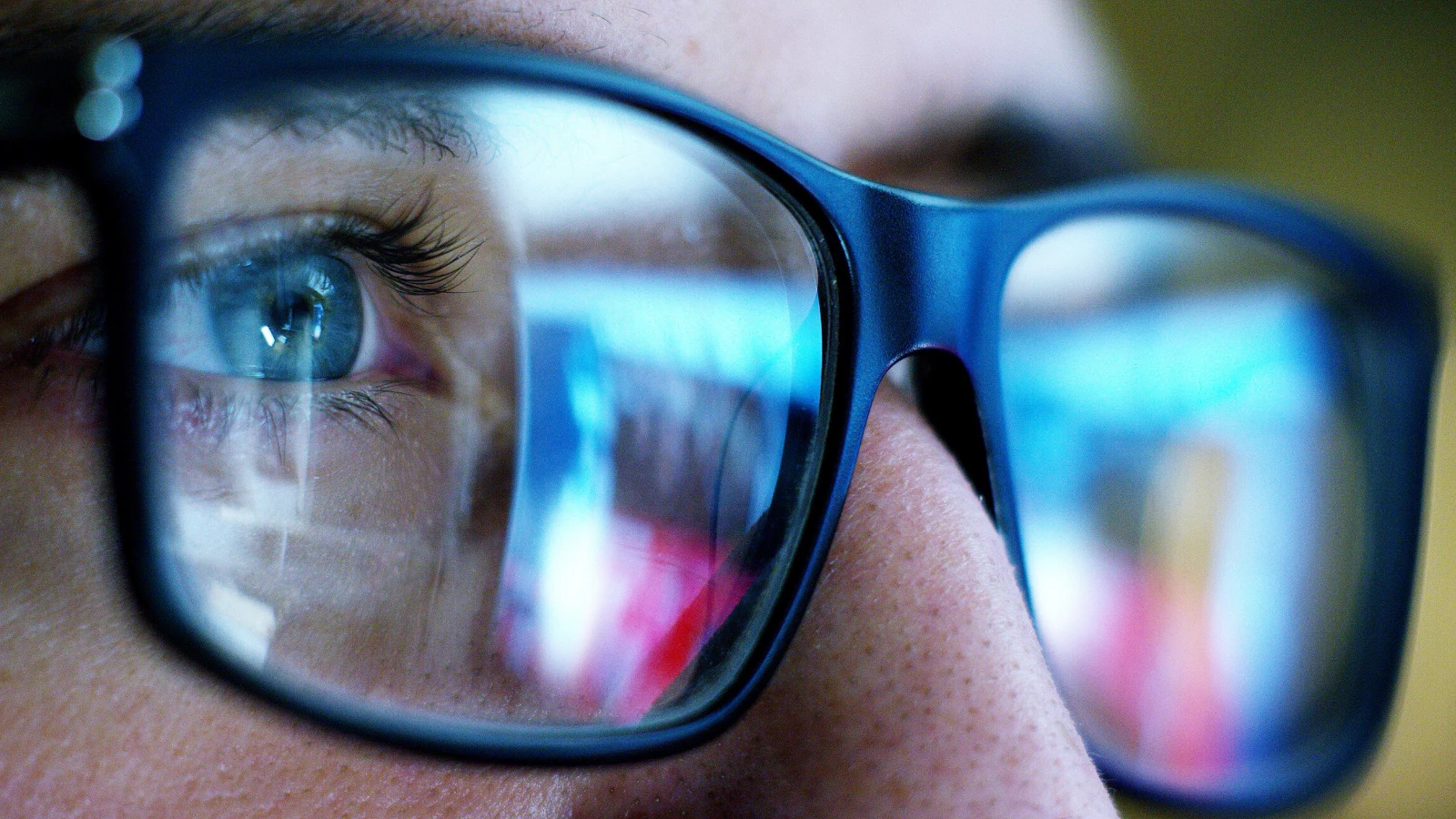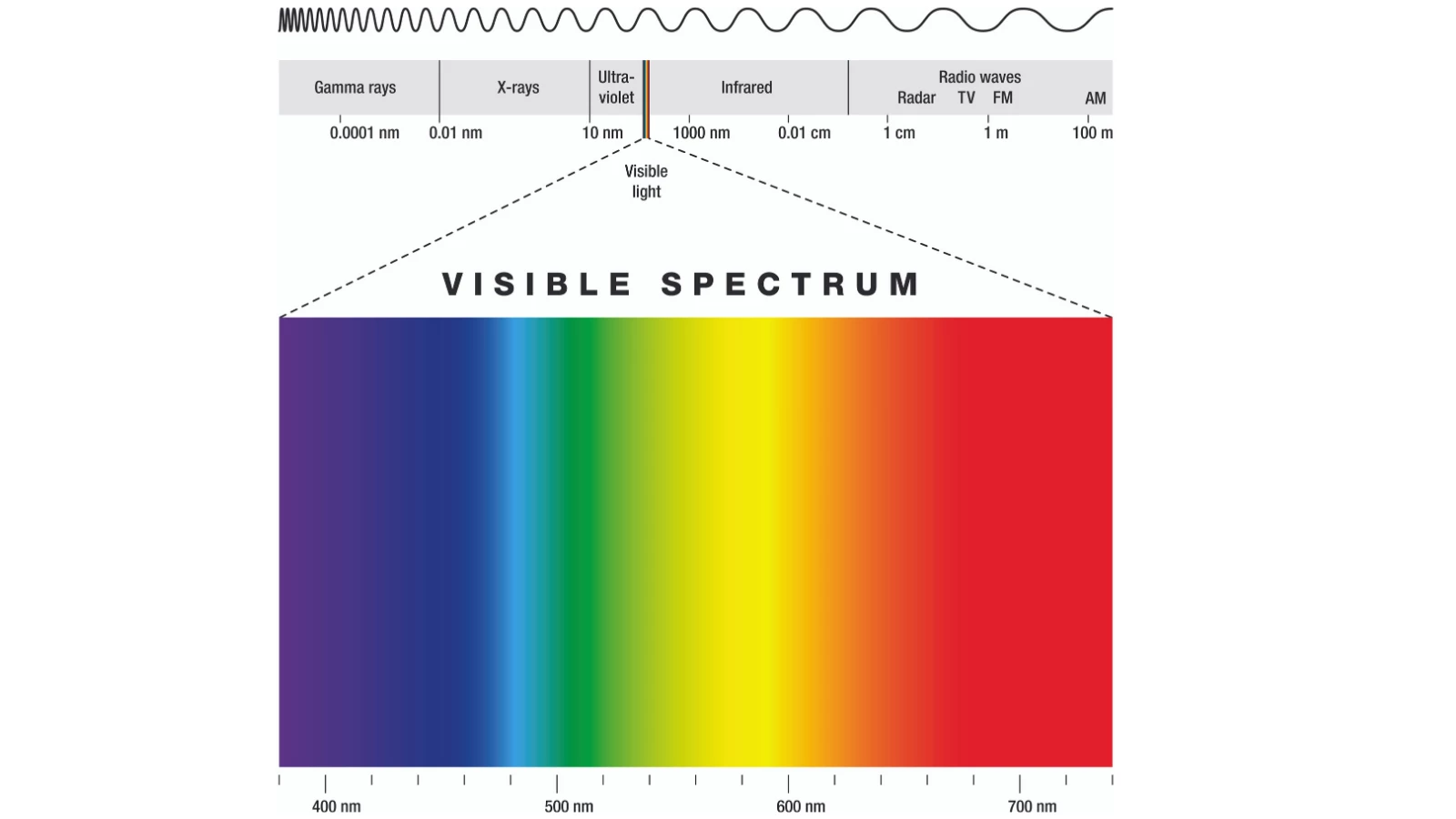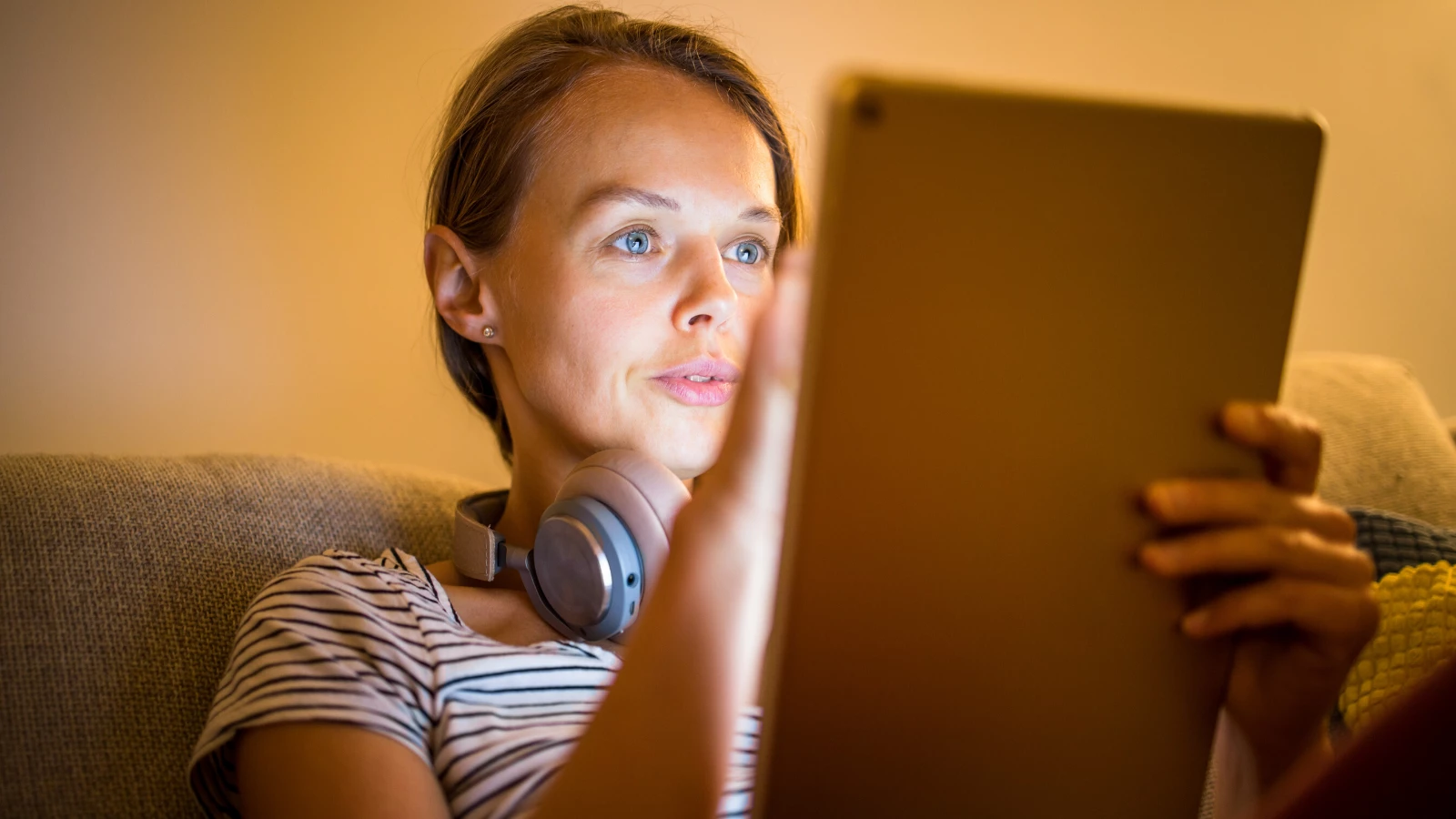Artificial Blue Light is Making Us Age

What is Blue Light?
All light is composed of electromagnetic particles moving in waves. (1) Each color of the visible spectrum is associated with a wave of a particular length and intensity. These waves emit energy.
Although it may seem counterintuitive, the shorter the wave, the more energy it emits. Blue light is the result of the shortest waves, meaning it emits the most energy of the colors in the spectrum.

Blue light appears naturally in sunshine and surrounds us. It’s the reason the sky appears blue. (Technically what happens is that blue light is scattered more than the other colors because it travels as shorter, smaller waves. This is why we see a blue sky most of the time.)
Thanks to blue light, we feel awake during the day and our circadian rhythms are regulated. Without enough blue light, we become more prone to depression. That’s what happens to some people in winter as the days shorten and darken, leading to Seasonal Affective Disorder. In other words, getting enough exposure to blue light is important—but enough is not the same as too much.
What’s the Problem with Blue Light?
The problem comes from excessive exposure to artificial blue light. We get more exposure to blue light now than ever before from screens on our smartphones, computers, televisions, and other devices. Blue light also is emitted by compact fluorescent lights, fluorescent lights, and LED lights (at least those not color-balanced for indoor lighting). In this case, too much of a good thing isn’t good.
The high energy in blue light leads it to flicker longer and more intensely than other colors. The flickering creates glare, and glare is very hard on our eyes. Evidence indicates that too much screen time can damage eyesight and cause blurred vision, double vision, eye fatigue, irritation, and redness in the eyes. It also can increase the risk of macular degeneration and glaucoma.
Beyond causing eye problems, previous research has shown that excessive exposure to artificial blue light can disrupt natural circadian rhythms and cause insomnia, which is why it’s good to refrain from using your devices for at least a few hours prior to bedtime. Even more, though, evidence indicates a link between blue light exposure and certain cancers and increased risk for diabetes, heart problems, and obesity.
Prevalence of Excess Blue-Light Exposure
- A Kaiser study found that children and teenagers from ages eight to 18 spend over seven hours daily in front of a screen. (3)
- A survey by Common Sense Media found that children aged 8 to 12 spend more than 4.5 hours daily looking at screens, while teens enjoy 6.5 hours of daily screen time. (4)
- A Nielson study found that adults spend an average of three hours and 48 minutes a day on computers, tablets, and smartphones, plus four hours and 46 minutes watching television. (5) That adds up to well over eight hours of artificial blue light exposure a day.
Blue Light May Also Accelerate Aging
As if it isn’t worrisome enough that blue light can hurt your eyes, disturb your sleep, and cause health problems, a new study indicates that it just might make you age faster, too. (2) The study, published in Aging and Mechanisms of Disease, found that high doses of exposure to blue light can damage cells in the brain and retina.
The scientists used common fruit flies for the research because, believe it or not, the little insects have lots of cellular and developmental similarities to humans. The relationship between fruit fly and human genes is so close that often the sequences of newly discovered human genes, including disease genes, can be matched with equivalent genes in the fly. In fact, 75 percent of the genes that cause disease in humans are also found in the fruit fly. And that’s why a study of blue light using fruit flies may be very relevant to humans.
The flies were divided into three groups. The first group was kept in darkness, the second got daily exposures to 12 hours of darkness followed by 12 hours of light from LED bulbs that provided unbalanced, blue-weighted light similar to the light emitted by computers and mobile phones, and the third was exposed to the LED light but had blue wavelengths filtered out (as are indoor balanced LED lights).
At the conclusion, the flies that received 12 hours of full exposure to the blue-weighted LED light had damaged neurons in their brains and retinas, as well as impaired locomotion. One of the most surprising results was that some of the flies were mutants that had no eyes, but still, exposure to LED lights resulted in brain damage. In other words, they didn’t have to see the blue light in order to suffer damage from it.
According to one of the study authors, Dr. Jaga Giebultowicz of Oregon State University, “We started asking, ‘what is it in the light that is harmful to [the fruit flies],’ and we looked at the spectrum of light. It was very clear cut that although light without blue slightly shortened their lifespan, just blue light alone shortened their lifespan very dramatically.”

Blue Light and You
What do aging fruit flies have to do with you? What does the research indicate for your health? Again, fruit flies share biological similarities with humans, particularly in how cells age, so the research offers good evidence that overexposure to artificial blue light might damage cells. And that damage will occur even if you aren’t actively sitting in front of your computer screen, but simply have it on in the background. Here are some steps you can take to protect yourself:
- Minimize device and television time, if possible. The less time you spend looking at your screens, the better off you’ll be in terms of eye health, brain health, and longevity (and happiness, according to other studies.)
- Turn off your devices when you aren’t using them.
- Shut off fluorescent and LED room lights, lights on appliances, and so on unless absolutely needed. Your electric bill will benefit, too.
- Where possible, replace those lights with color-balanced versions that produce warmer, redder light.
- Use blue-light filtering on your screens. Windows 10 and MacOS both have built-in blue-light filters, but you need to turn them on. If you don’t have either of these operating systems, you can use a free third-party alternative, like Lux. Note that many cell phones also have a built-in blue light filter, but again, you’ll have to turn it on.
- Wear special amber glasses that filter out blue light. A quick computer search for blue-light filtering glasses will yield plenty of possibilities, some starting under $10. It’s also a good idea to get an antiglare coating on prescription glasses if you wear them. Just remember that it’s not just the eyes you need to protect, and blue light hitting your body will also have an effect.
Also, remember that you do need some blue light in order to be alert during the day so it’s not a good idea to wear filtering glasses 24/7. It’s the artificial, flickering blue light coming from screens, LED bulbs, and fluorescents that causes the damage.
Also, read...
Yoga and Body Image: How Yoga Can Help You Make Friends with Your Body
Smooth Transitions: 9 Ayurvedic Tips for Moving into Spring
Free Yoga Video: Breathing for Pelvic Floor Health: Two Practices to Deepen Your Breath
Related courses
Breath as Medicine: Yogic Breathing for Vital Aging
Yoga and Myofascial Release: Releasing Chronic Tension with the Bodymind Ballwork Method

Jon Barron is the founder of the Baseline of Health® Foundation, whose website attracts millions of visitors worldwide so people can learn about health and nutrition for free. He has lectured internationally and has been featured on many regional and syndicated media programs as an expert in disease prevention, anti-aging, and nutrition.
- “Blue Light Exposed.” 25 October 2019. http://www.bluelightexposed.com/#bluelightexposed
- Nash, Trevor R. et al. “Daily blue-light exposure shortens lifespan and causes brain neurodegeneration in Drosophila.” 17 October 2019. Aging and Mechanisms of Disease. 25 October 2019. https://www.nature.com/articles/s41514-019-0038-6www
- https://www.cdc.gov/nccdphp/dnpao/multimedia/infographics/getmoving.html
- https://www.commonsensemedia.org/sites/default/files/uploads/research/census_researchreport.pdf
- https://www.marketwatch.com/story/people-are-spending-most-of-their-waking-hours-staring-at-screens-2018-08-01




